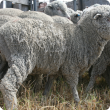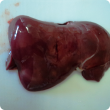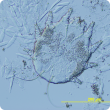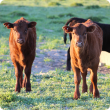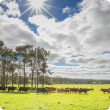Pests, weeds & diseases
Pests, weeds and diseases pose a serious risk for primary producers as they can impact on market access and agricultural production.
To reduce the impact of pests, weeds and diseases, the Department of Primary Industries and Regional Development:
- works with landholders, grower groups, community groups and biosecurity groups.
- provides diagnostic services and information on prevention, management and treatment.
- provides biosecurity and quarantine measures to prevent introduction, and to eradicate or manage current pests.
For advice on pests, weeds and diseases search our website, the Western Australian Organism List or contact our Pest and Disease Information Service (PaDIS).
For diagnostic services, please contact our Diagnostic Laboratory Services.
Filter by search
Filter by topic
- (-) Remove Management & reproduction filter Management & reproduction
- Livestock management (19) Apply Livestock management filter
- Livestock & animals (19) Apply Livestock & animals filter
- Livestock health & diseases (18) Apply Livestock health & diseases filter
- Diseases (18) Apply Diseases filter
- Livestock species (16) Apply Livestock species filter
- Biosecurity & quarantine (14) Apply Biosecurity & quarantine filter
- Biosecurity (14) Apply Biosecurity filter
- Sheep (13) Apply Sheep filter
- Livestock biosecurity (13) Apply Livestock biosecurity filter
- Livestock disease surveillance (12) Apply Livestock disease surveillance filter
- Livestock parasites (4) Apply Livestock parasites filter
- Beef cattle (4) Apply Beef cattle filter
- Dairy cattle (3) Apply Dairy cattle filter
- Control methods (2) Apply Control methods filter
- Poultry & birds (1) Apply Poultry & birds filter
- State Barrier Fence (1) Apply State Barrier Fence filter
- Stockfeed (1) Apply Stockfeed filter
- Wildlife biosecurity (1) Apply Wildlife biosecurity filter
- Veterinary chemicals (1) Apply Veterinary chemicals filter
- Mechanical, physical and cultural (1) Apply Mechanical, physical and cultural filter
- Invasive species (1) Apply Invasive species filter
- Chemicals (1) Apply Chemicals filter
- Emergency animal disease preparedness (1) Apply Emergency animal disease preparedness filter
- Feeding & nutrition (1) Apply Feeding & nutrition filter
- Food, export & investment (1) Apply Food, export & investment filter
- Goats (1) Apply Goats filter



